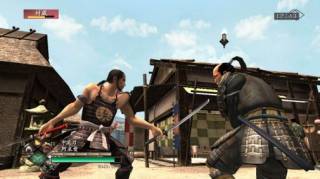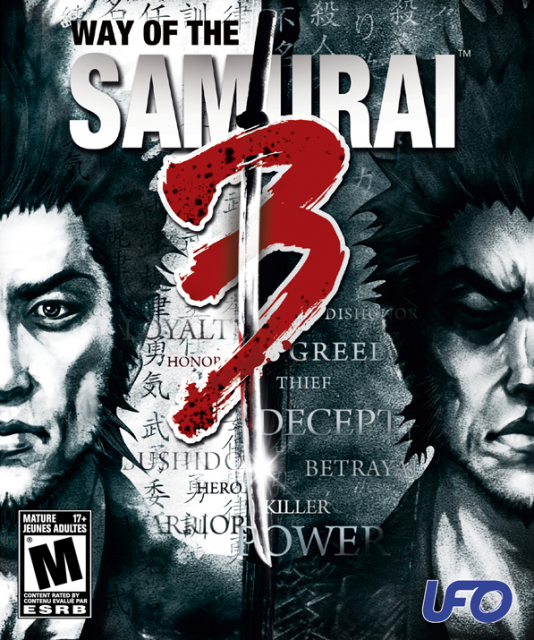The Ways of the Samurai are numerous and rewarding.
Way of the Samurai 3 is the latest game in a series of open-world titles set during the age of the samurai. The story is set in a region of Japan called Amana, where conflict is brewing. The Fujimori clan overthrew the previously ruling Sakurai clan. Now the Fujimori rule with tyranny while those loyal to the Sakurai clan have banded together as the Ouka, amassing their own power through hooliganism. Caught in the middle are the townspeople of Takatane, who only want to live in peace.

While the inklings are key to finding the games many endings, players are also free to simply wander around Amana and do as they like, whether that be practicing swordplay at the dojo, participating in a number of simple minigames, or by simply getting into fights with everyone in sight. There are also a number of shops scattered about, offering healing items and accessories for sale, while a blacksmith can enhance weapons or forge new ones.
And as for what you do with those swords, combat in the game is simple and fairly accessible. There are two standard attacks, light and heavy, though the attacks become more varied as you collect weapons and fight in a variety of weapon stances. The player automatically locks on to face a nearby enemy, though the lock-on can be manually shifted to different targets. It's also possible to switch to the use of the weapon's blunt edge, allowing the player to defeat enemies without killing them.
What isn't so simple and accessible is the game's open world structure. While the player has plenty of freedom to see and do, very little is explained outright. It took me a about five or six attempts at the game before things really started to click and I managed to survive to see one of the game's endings. Enjoyment and appreciation of the game are largely determined by the player's own willingness to explore and experiment.
Survival in Way of the Samurai 3 is of the utmost importance. If the player dies, that's it. There are no extra lives and no respawning. The game simply ends, and the player is forced to either reload their last save or save the game and restart. While this sounds punishing, and it certainly can be, the good thing is that when the game restarts, all of the gear and money earned in previous playthroughs carry over. Still, get into the wrong fight at the wrong time, and the game can end very quickly. Actually, on any given playthrough, Way of the Samurai 3 isn't very long; there's actually a trophy for getting to an ending in less than an hour, but the amount of replay value afforded by the numerous endings, branching paths, and the New Game + are able to extend its play time significantly.
Way of the Samurai 3 is not a pretty game, but it's not ugly, either. While the graphics aren't the sharpest on the PS3, the look and feel manage to successfully evoke the Sengoku Period of Japan quite well. The music is also atmospheric and distinctive, mixing eastern and western classical instruments in a soundtrack that's well done and perfectly suited to the game. Japanese and English voice tracks are included, though voice acting is sparse during gameplay and is only truly present during the numerous cinematics.
Way of the Samurai 3 is not a perfect game. It has its share of quirks, and the game asks for a lot from the player by requiring them to understand the game through exploration and making mistakes. On the other hand, once the game clicks, it can become very enjoyable even when the player's character dies since it's easy to start over and try a different approach. As much as some of its mechanics may push people away, learning by playing and starting over with each death can be a rewarding experience. In a sense, there's more about the world of Way of the Samurai 3 that's actually open to the player than what's found in more popular games like Grand Theft Auto IV and Saint's Row 2.
